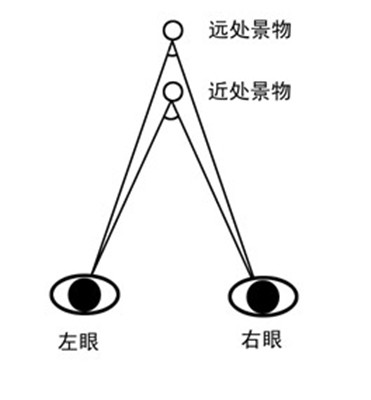Parallax is phenomenon by which we can judge the distance to things just by looking at them.
視差是我們目測事物的距離時所產(chǎn)生的現(xiàn)象。
Astronomers use parallax to calculate the distance to stars.
天文學家利用視差來計算我們到恒星的距離。
Do you need a gigantic computer-based observatory to use it?
你需要使用一個龐大的以計算機為基礎的天文臺嗎?
Not at all. Your finger will do nicely.
根本不用。你的手指就可以做得很好。
Put one finger up in front of your face and close one eye, then the other.
放一只手指在你的面前,閉上一只眼睛,然后換另一只眼睛。

Your finger seems to jump back and forth between two positions.
你的手指似乎在兩個位置之間來回移動。
That's because the perspective from each eye is slightly different,and your brain combines these images to give you a sense of three dimensional space.
這是因為每只眼睛的角度稍有不同,大腦合成的這些影會給你一種三維空間感。
Notice, however, that the farther you move your finger away the less discrepancy there is between theimages.
但是,請注意,你的手指放得越遠,這些圖像之間位置的差異就越小。
Parallax must decrease with distance!
視差會隨著距離增加而減少。
This is an exciting discovery, because we can now use parallax to judge the distance to objects out in space.
這是一個令人興奮的發(fā)現(xiàn),因為我們可以利用視差來判斷與外太空物體的距離。
Here's how.
下面我們來說說怎樣做到。
Because the earth moves around the sun in one year's time, every six months it is as far away fromwhere it was six months ago as it can get.
因為地球圍繞太陽公轉(zhuǎn)一圈是一年的時間,每六個月后它的位置離六個月前最遠。
That distance is like the distance between your eyes.
這之間的距離就像你兩眼之間的距離一樣。
Images taken of a far-off object in January can be compared with images of the object in June.
在一月拍攝的遠距離物體可與六月拍攝的相比較,
The apparentmotion of the object due to parallax tells us how far away it is from earth.
根據(jù)視差所表現(xiàn)的物體的明顯運動軌跡能夠告訴我們它離地球有多遠。
But wait! How do you know that your telescope is pointed in exactly the right direction?
但是等等,你怎么知道你的望遠鏡是指向的正確的方向?
By aligning itwith the so-called “fixed stars”–stars so far away they show no parallax motion whatsoever.
通過對準所謂的“恒星”-星星如此之遠以至于它們沒有視差運動的現(xiàn)象。
Against that unmoving background, the closer stars can be picked out.
與靜止的背景形成對比,比較近的星星就可以被挑選出來。











